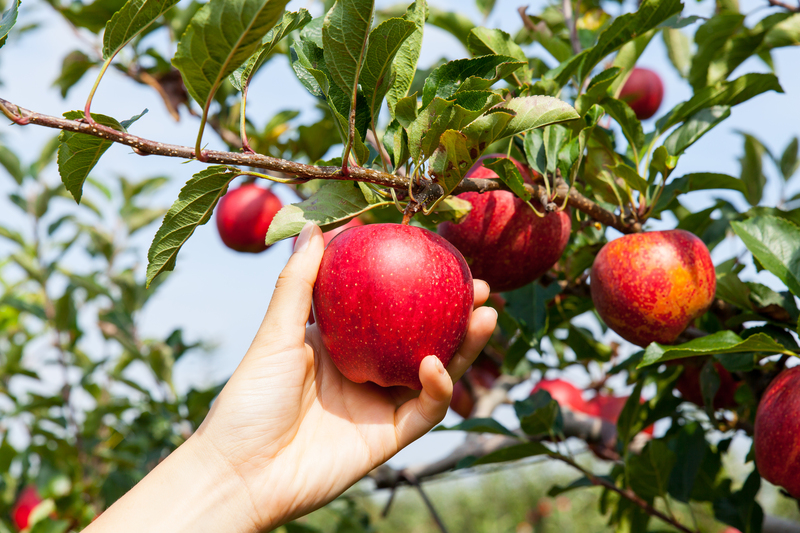Hassle-Free Steps for Clearing Tree Stumps From Your Landscape
Removing an unwanted tree is only half the battle. The stubborn stump left behind can be a major eyesore and obstacle in your otherwise pristine yard. Whether you plan to plant new turf, start a garden, or simply enjoy an unobstructed view, clearing tree stumps from your landscape is crucial for reclaiming your outdoor space. In this comprehensive guide, we'll walk you through hassle-free steps for tree stump removal, ensuring your landscape is beautiful, usable, and completely stump-free.
Why Remove Tree Stumps From Your Landscape?
Before diving into the easy steps for landscape stump clearance, it's important to understand why prompt removal is necessary:
- Safety: Stumps pose tripping hazards for children and adults alike.
- Pest Prevention: Tree stumps attract insects like termites, beetles, and ants, which can migrate to your home.
- Improved Aesthetics: Clearing stumps can instantly enhance the look of your yard.
- Regrowth Control: Many trees can resprout from the stump, leading to unwanted suckers.
- Land Use: Stumps limit your ability to plant, landscape, or build on your property.
With these reasons in mind, let's explore the simple steps for removing tree stumps from your yard.

Step 1: Assess the Stump
Determine Size, Tree Species, and Location
Not all stumps are created equal. The method you select for clearing landscape stumps will partly depend on:
- Stump Size: Smaller stumps are easier and may even allow for manual removal.
- Tree Type: Different species have different root structures. Some, like poplar or pine, have shallow roots, while oak and maple roots run deep.
- Location: Consider proximity to buildings, underground utilities, and landscape features.
*Knowing these factors will guide your approach and ensure safety.*
Step 2: Gather Required Tools and Equipment
Depending on the stump removal method, you may need a variety of tools. Here is a general checklist:
- Shovel and digging bar
- Mattock or pickaxe
- Loppers or hand saw
- Chainsaw (for large stumps)
- Heavy-duty gloves and eye protection
- Wheelbarrow or tarp for debris
- Stump grinder (for difficult stumps)
- Chemical stump remover (if opting for chemical methods)
Always wear safety gear when working with power tools and chemicals.
Step 3: Choose Your Tree Stump Removal Method
There are four primary methods for clearing tree stumps from your property:
- Manual Removal
- Stump Grinding
- Chemical Stump Removal
- Natural Decomposition (Rotting)
Manual Removal: Best for Small Stumps
This physical method involves digging out the stump and its roots using hand tools. It's most effective for stumps with a diameter of less than 12 inches and for those with shallow root systems.
- Step 1: Use a shovel to dig around the stump, exposing as many roots as possible.
- Step 2: Cut through roots using a lopper, saw, or axe. A mattock works well for thicker roots.
- Step 3: Wiggle the stump and detach it from the ground. For persistent stumps, use a digging bar for leverage.
- Step 4: Fill the hole with soil and sod, then level the ground.
Manual removal is eco-friendly and immediate but requires physical effort, especially for larger stumps.
Stump Grinding: Fast and Professional
One of the most efficient ways to remove tree stumps is with a stump grinder, a powerful machine that shreds the wood into mulch.
- Step 1: Rent a stump grinder from a local hardware store or hire a tree service.
- Step 2: Clear rocks and debris from around the stump to prevent damage to the grinder.
- Step 3: Slowly guide the grinder across the top and then lower it incrementally 4-6 inches into the ground.
- Step 4: Continue grinding until the stump and roots are below ground level.
- Step 5: Fill the cavity with soil and wood chips.
Stump grinding is the quickest, most effective removal process for large or tough stumps, leaving you with usable mulch for your garden.
Chemical Stump Removal: Low Effort, Slow Results
Chemical stump removers accelerate natural decomposition, breaking down wood fibers over weeks or months.
- Step 1: Drill several deep holes in the stump's surface and along its sides, using a large bit (at least 1/2 inch).
- Step 2: Pour granular or liquid stump remover into the holes, then add water as directed.
- Step 3: Cover with a tarp to keep out rain and speed up decay.
- Step 4: After 4-6 weeks, the stump should be soft enough to break apart with an axe or shovel.
This is a hassle-free method for clearing stumps if you are not in a rush but do want minimal physical work.
Natural Decomposition: The Patient Option
For those preferring an all-natural approach, allowing the stump to rot on its own is an option.
- Step 1: Speed up rotting by drilling holes and filling them with a nitrogen-rich fertilizer.
- Step 2: Cover the stump with soil and mulch, which keeps it moist and encourages fungi.
- Step 3: Wait 6-12 months, periodically checking and removing softened wood.
This technique is eco-friendly and simple but very slow.
Step 4: Dispose of Stump Debris Responsibly
Once the tree stump is removed, proper disposal of debris is vital for a tidy landscape:
- Add woody debris to your compost pile (if untreated).
- Use wood chips as mulch around plants and trees.
- Contact local waste management for large trunk and root disposal.
- Rent a dumpster for larger landscaping projects.
Responsible removal of organic debris keeps your landscape neat and prevents pest infestations.
Step 5: Fill the Void and Restore Your Landscape
Complete Your Yard Transformation
- Backfill the empty stump hole with rich topsoil.
- Water and compact the soil to prevent settling.
- Consider planting grass seed, laying sod, or replanting native shrubs where the stump once stood.
- Maintain regular watering and care for new plantings.
Your lawn will soon appear as if the old tree stump was never there!
Pro Tips for Easy and Effective Tree Stump Clearing
- Choose the method that best fits your time, budget, and physical ability.
- Always check for underground utilities before digging or grinding.
- Protect yourself with gloves, boots, and safety glasses, especially when handling power tools.
- If the stump is close to structures or too large to manage, hire a professional tree service.
- Use eco-friendly chemicals specifically designed for stump removal.
- Schedule removal during dry weather to avoid dealing with muddy conditions.
When to Hire a Professional for Stump Clearing
While many homeowners can handle small-scale tree stump removal, there are times when calling a professional is advisable:
- The stump is very large or near foundations, driveways, or sewer lines.
- Multiple stumps need to be cleared in a short time frame.
- You lack the necessary equipment or physical capability.
- There are hidden risks such as buried cables or tough hardwoods.
*Hiring professional stump removal services ensures safe, quick, and thorough clearing, particularly for complex landscapes.*
Common Questions About Clearing Tree Stumps From Your Landscape
How long does it take to remove a tree stump?
Manual and grinding methods can clear a stump in a matter of hours, while chemical and natural rotting take weeks to months.
Can I burn the stump?
In some rural areas, stump burning is permitted, but most municipalities ban open burning due to fire risks. Always check local regulations before considering this method.
Is it okay to leave a tree stump in my yard?
While not illegal, leaving stumps often attracts pests, creates hazards, and reduces landscape appeal. Prompt removal is strongly recommended.
Will removing a stump damage my lawn?
Using the right technique minimizes lawn disruption. Fill holes with good soil and reseed for a seamless finish.

Final Thoughts: Enjoy a Stump-Free Landscape
Clearing tree stumps from your landscape doesn't have to be a frustrating or exhausting chore. With hassle-free steps and the right approach, you can reclaim your yard's natural beauty and utility. Whether you opt for manual extraction, efficient grinding, chemical breakdown, or patient natural rotting, each method brings you closer to a smooth, functional, and picturesque green space.
Don't let leftover stumps ruin your landscape. Take the time to clear them using the best stump removal methods for your needs, and enjoy your revitalized outdoor area for years to come!
Key Takeaways for Easy Stump Removal
- Assess your stump for size, species, and location before beginning.
- Choose between manual, grinding, chemical, or natural rot methods for clearing stumps.
- Prioritize safety and proper disposal for a truly hassle-free experience.
- Restore the ground with fresh soil and grass for seamless landscaping.
- Consult a professional for challenging or multiple stumps.
With these simple, step-by-step instructions, you'll have no trouble clearing tree stumps from your yard swiftly and efficiently, leaving you to enjoy your beautiful landscape without obstacles!